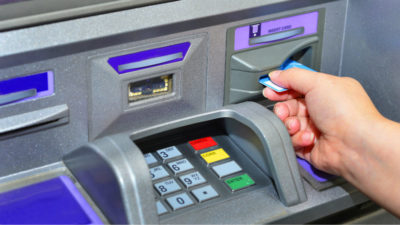Alimentation Couche-Tard (TSX:ATD.B) must have a pretty high metabolism: it hasn’t spent much time digesting its $2.6 billion acquisition of Statoil Fuel & Retail, the massive Scandinavian gas retailer it purchased in June 2012. Statoil gives Couche-Tard a broad footprint in Europe, with 2,300 locations spread across Norway, Sweden, Denmark, the Baltics, Poland, and Russia. Including Statoil’s operations in its fiscal 2013 results enabled Couche-Tard to trounce its year-over-year comparisons: revenues increased no less than 55% over the prior year, and earnings increased 25%.
Rather than slow down the company’s management team, this major acquisition seems to have only increased Couche-Tard’s already strong appetite for deal making. The company routinely acquires retail gas locations from small independent operators, as well as multinationals such as Exxon. In the last fiscal year, Couche-Tard picked up 155 locations and acquired 45 fuel supply agreements, primarily in the United States, paying $221 million in cash.
Valuation
The company currently trades at a price-to-earnings multiple of 20.1. This is a little dear when compared to some peers. For example, the North West Company (TSX: NWC) trades at a P/E ratio of 17.8. Parkland Fuel Corp (TSX: PKI) trades at a P/E of 12.5. But Couche-Tard is distinguishing itself as a growth vehicle, and vigorous revenue and profit growth do come at a premium. The company’s price-to-earnings growth ratio, or PEG ratio, a measure of price to a corporation’s growth rate, stands at 0.83. When below 1.0, this metric indicates that a stock may be undervalued. When you factor in the boost to earnings that Statoil and other acquisitions will contribute in the future, the market’s valuation of Couche-Tard appears a bit more reasonable.
What’s not to like?
As Joni Mitchell once pointed out: “Every picture has its shadows / And it has some source of light.” There is a shadow to this picture, and that is the debt Couche-Tard has taken on in its dash to dominate the retail gas landscape. At the end of its 2012 fiscal year, before the acquisition of Statoil, the company sported a fairly conservative balance sheet. Total assets on the books at 4/29/2012 were $4.4 billion, total debt was a mere $665 million, and the company’s debt-to-equity ratio stood at a quite respectable 0.31.
In one short year, assets have mushroomed to $10.5 billion, but debt has grown to $3.6 billion, and the debt-to-equity ratio has deteriorated past the 1.0 threshold to 1.12. This means that for every dollar of equity the company claims, it owes 1.12 dollars in debt.
How to proceed
Alimentation Couche-Tard has blossomed into one of the largest retail fuel and convenience store operators in the world. Perhaps at some point in the future it will surpass the massive Japanese-owned 7-11 franchise system to take the global crown. Certainly the U.S. market can afford the company growth opportunities for a long while as it expands the popular Circle K banner. And further advancement across Europe and Asia is plausible: a weak economy in 2012 didn’t stop Couche-Tard from buying Statoil. But those with a cautious bent may want to wait at least another business quarter or two to see if Couche-Tard puts its cash flow to work in paring down long-term debt, and righting its upside-down debt-to-equity ratio. At that point, investors may well want to join the night owl in its midnight snacking.
Are you hungry for more investment ideas?
Canada has yielded its fair share of great companies. But unsuspecting Canadian investors could get ambushed by a glaring weakness in their portfolios. One basic investing principle holds the key to a rock-solid portfolio … and it starts with our neighbors to the south, America.
That’s why The Motley Fool has put together a Special FREE Report, “3 U.S. Stocks Every Canadian Should Own” The thing is, these stocks might as well be Canadian … because you use them every day. Just click here to receive a copy at no charge!
The Motley Fool’s purpose is to help the world invest, better. Click here now for your free subscription to Take Stock, The Motley Fool Canada’s free investing newsletter. Packed with stock ideas and investing advice, it is essential reading for anyone looking to build and grow their wealth in the years ahead.
Follow us on Twitter and Facebook for the latest in Foolish investing.
This post was created by Fool contributor Asit Sharma.
Fool contributor Asit Sharma doesn’t own shares in any of the companies mentioned at this time. The Motley Fool doesn’t own shares in any of the companies mentioned.







